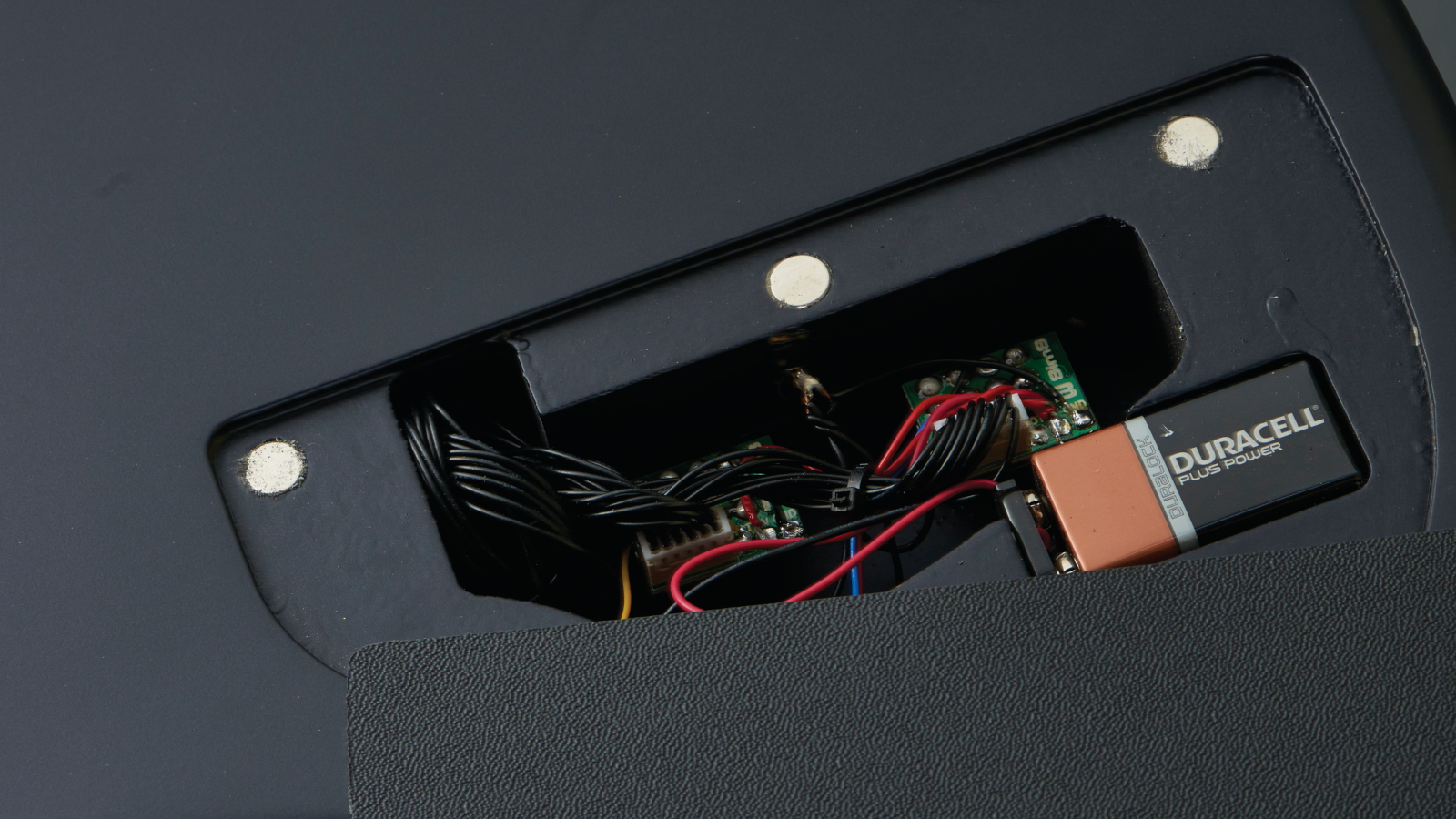Do You Love Battery-Powered Electronics but Hate Voltage Drops, Leaks and Fiddly Replacements? Here’s an Easy Solution
How to build a BBB – a Battery Breakout Box

The dilemma: I don’t like having batteries in a guitar.
The voltage drops as batteries age, sometimes they’re hard to replace, and if they leak...
Well, let’s not go there.
But I do like some onboard electronics that require batteries, such as Fishman’s Fluence pickups, as well as onboard buffer boards.
Fortunately, there’s a pretty easy solution to the batteries and their potential problems: You can build a BBB – a Battery Breakout Box.
How It Works
Most onboard guitar electronics use a stereo output jack and connect the battery’s ground to the ring connection.
Plugging a mono cable into the guitar turns on the battery, because the battery connects to ground through the plug’s ground connection. But if we attach the ring where the battery’s positive (+) terminal connects, then the stereo jack’s ring connection can supply the positive voltage that the battery would normally provide.
All the latest guitar news, interviews, lessons, reviews, deals and more, direct to your inbox!
To do this, either cut the red and black wires going to the battery connector and solder the ends together, or just short out the battery connector terminals that go to the internal battery.
Put tape over any connections to insulate them. Now we can power the guitar’s onboard electronics by sending nine volts to the guitar’s stereo jack ring connection.
Building a Breakout Box
This technique requires a stereo, not mono, guitar cable and a breakout box you plug into before going into an amp.
Here’s a simple breakout box schematic:

The stereo jack connects to the stereo cable that goes to your guitar. The ring connects to S1, a single-pole, double-throw switch that can select either a nine-volt battery inside the breakout box or nine volts from a DC adapter.
The guitar’s audio output goes to the jack that connects to your amp.
The 1N4001 diode is optional. This circuit assumes the guitar needs +9 volts; if you accidentally hook up an AC adapter with a negative tip instead of a positive one, the diode prevents the negative voltage from reaching your guitar.
If you can dedicate a +9-volts DC adapter to your guitar’s onboard electronics, wire the adapter hot terminal directly to S1.
Here’s a possible implementation:

The input jack is stereo and connects to your guitar through a stereo cable.
The output jack is mono and goes to your amp or audio interface.
The switch chooses between an internal nine-volt battery or an adapter that plugs into the nine-volt mini jack. Note that the adapter needs to generate a DC voltage (like a battery), not an AC voltage.
While I’m not a fan of having batteries inside the guitar, I’m fine with them outside of it, and the BBB makes that easy by allowing you to use either a battery or a DC adapter.
Do this and you’ll never have to open up your guitar again to feed it the volts it needs.
